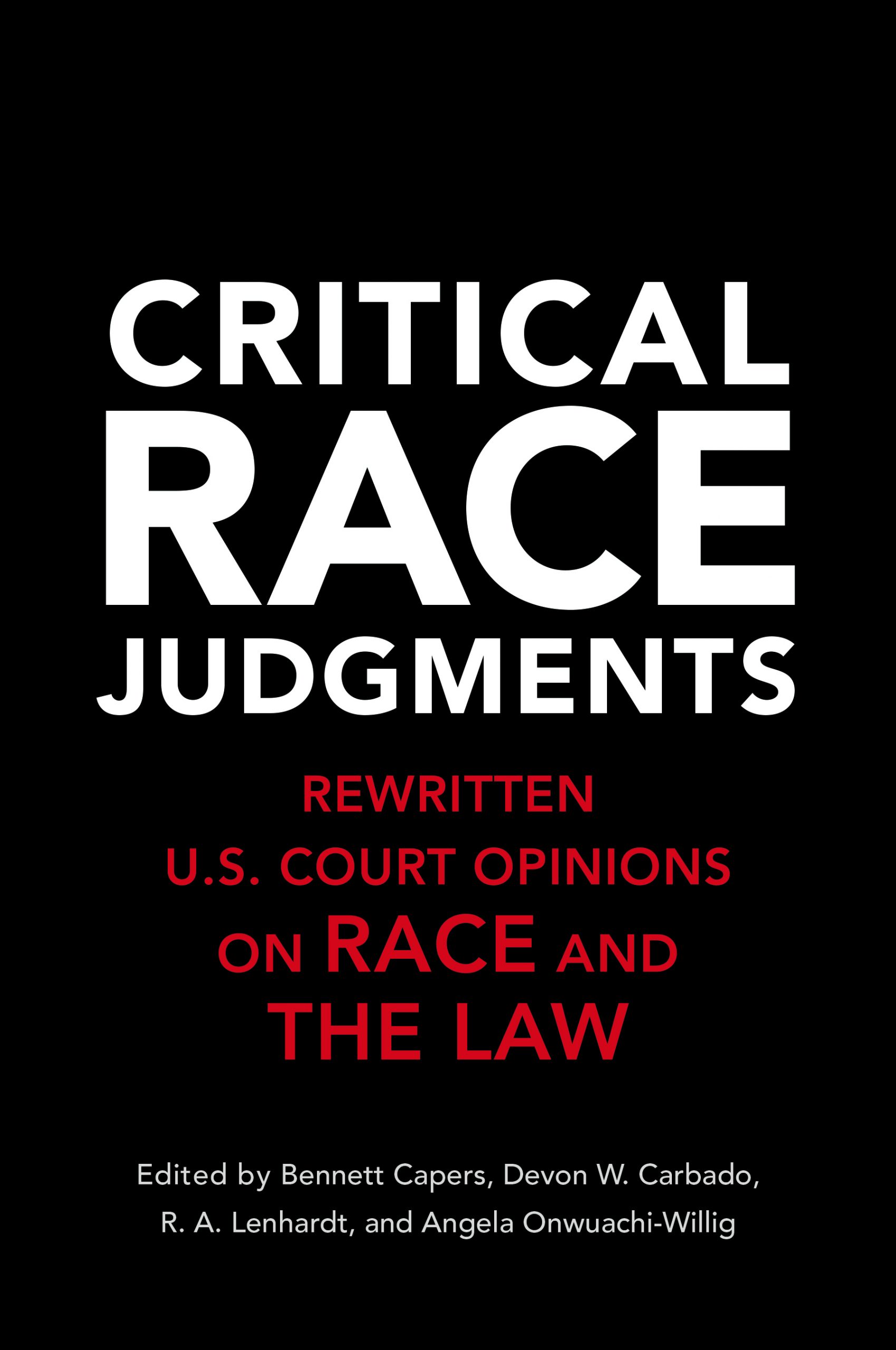For more than three decades, critical race theorists have had to contend with a constitutional framework that makes any reference to race doctrinally suspect. As the law currently stands, any governmental reliance on race, even for benign or remedial purposes, is not merely problematic, but also presumptively unconstitutional and therefore warrants the application of the highest level of judicial review — strict scrutiny. Under this constitutional arrangement, efforts on the part of public schools and colleges and universities to integrate or diversify their student bodies would be subject to the same judicial skepticism as efforts on the part of those institutions to segregate their students. From the Supreme Court’s perspective, because both integration initiatives and segregation initiatives necessarily rely on race, both should be treated as suspect and therefore be subject to what the Court repeatedly refers to as the most “exacting” and “rigorous” form of judicial review.
That kind of formalism (that all uses of race should receive the same constitutional treatment) continues to shape constitutional law in ways that essentially ensure that Black lives, and the lives of other racially marginalized groups, will not matter.
Importantly, to critique the court’s formalism in the foregoing regard is not necessarily to take sides in, for example, debates over affirmative action. Even if one thinks that affirmative action is bad social policy, one might still reasonably ask: Is it fair to say that taking race into account in the affirmative action context is like taking race into account in the Jim Crow context? Supreme Court doctrine reifies that fiction by applying the same constitutional standard to both forms of race consciousness. In case after case, the Supreme Court has said that because it cannot tell the difference between benign and invidious uses of race, all uses of race must be strictly scrutinized. This race-per-se-is-bad approach to constitutional doctrine has made it virtually impossible to mobilize law to address existing forms of racial inequality.
That the application of strict scrutiny to any use of race would limit the remedial possibilities of law is not at all surprising. Think about the matter this way: How can one meaningfully address racial inequality without (a) explicitly invoking race and (b) directly targeting racial inequality? Imagine trying to diagnose and medically treat cancer by taking a “cancer-blind” approach. How would that even work? We think it highly unlikely that anyone would support a rule that prohibited doctors or researchers from either talking about cancer or directly targeting the disease for eradication.
Yet, in the context of race, the Supreme Court has insisted on colorblindness — and as a matter of law! Motivating that insistence is the view that race should be, and in fact is, irrelevant. But the hard truth of the matter is that race remains a salient feature in U.S. society, a feature that neither the Supreme Court nor any other body can simply wish away. This moment of “racial reckoning” in which we find ourselves ought to make that abundantly clear. Race still matters. Race matters with respect to who is incarcerated or not, who is subject to police violence or not, who has access to healthcare and education or not, who lives in environmentally degraded and impoverished communities or not, who occupies positions of power and privilege or not, and who is subject to debilitating stereotypes that inform decision making on the ground or not.
Race pervades every dimension of social life — from the conditions under which we are born to the circumstances under which we die. All of which raises the question: Why in the name of “equal protection” would the Supreme Court adopt an approach to race that limits our ability to ensure that everyone, regardless of race, is equally protected? Against the absence of CRT perspectives in U.S. law, a clear articulation of what a Critical Race Theory presence might look like in legal doctrine becomes particularly crucial. Thus, the need for Critical Race Judgments.
At the heart of Critical Race Judgments is a “what if?” question. How might seminal Supreme Court opinions — and a few lower court cases — have come out (or been reasoned) differently had a justice open to CRT been on the bench and been able to garner a majority of the vote? In answering this question, Critical Race Judgments does not merely demonstrate the relevance of CRT to some of the most controversial and complicated issues that the Supreme Court and lower courts have had to engage. It demonstrates the difference Critical Race Theory could have made — and can still make, a difference with the potential to make the United States a more perfect union.
In some ways, part of what CRT seeks to do is realize the unfulfilled racial justice aspirations of the “the First and Second Reconstructions” by staging a “Third.” The need for a Third Reconstruction is particularly salient given the political and social landscape in which we find ourselves. The differences in the number of cases and deaths from COVID-19, as well as hospital stays and treatments according to race during the pandemic, have made clear to many people the longstanding racial inequities of which people of color have long been aware. The killing of George Floyd by former officer Derek Chauvin, and his two partners, in Minneapolis, Minnesota on May 25, 2020, ignited nationwide protests, followed by protests across the globe, often formed around CRT tenets. Moreover, the specific demands for change that people continue to make draw on core CRT ideas, ideas that have become part of the everyday language of the first two generations to have lived in a world where CRT has always existed.
Still, our investment in a “Third Reconstruction” is not without controversy, and not just from the ideological right, but also from the ideological left, particularly if one frames law as a “master’s tool.” Recall Audre Lorde’s admonition that “the master’s tools will never dismantle the master’s house. They may allow us temporarily to beat him at his own game, but they will never enable us to bring about genuine change.” But in advancing that point, Lorde was not urging that we avoid legal contestations or the juridical terrain. She was asking us to jettison the dominant ways of thinking and doing that “keep the oppressed occupied with the master’s concerns.” That project of eschewing the “master’s concerns” is precisely what the rewritten opinions endeavor to do. Whether they are successful in that respect, we leave to the reader to decide.
It is hard to read the opinions and not notice some central CRT ideas, including but not limited to: race is a social construction that intersects with and is shaped by other social categories; law produces and legitimizes racial power; the historical dimensions of de jure discrimination continue to shape contemporary patterns of racial inequality; formal equality is rarely if ever enough to achieve substantive equality; racial discrimination is not exhausted by conscious racial intentionality; and the juridical deployments of colorblindness have functioned largely to entrench rather than ameliorate extant racial disadvantages. While all of these ideas ought to be subject to debate, the fact that some conservatives are seeking to “cancel” them should alarm anyone who takes racial justice and free speech seriously.
Professors Devon Carbado and Jonathan Feingold’s opinion, embedded below, rewrites Whren v. United States. Whren held that when police officers have probable cause to stop a vehicle for a traffic infraction, it is irrelevant for purposes of the Fourth Amendment whether that stop was racially motivated. Professors Carbado and Feingold’s opinion incorporates race into the “unreasonable search or seizure” analysis, describes the material harms of racial profiling, and outlines the multiple Fourth Amendment grounds on which the Court could have reached a different conclusion.
Professors Carbado and Feingold have expanded on this recasting of Whren in a forthcoming essay in the UCLA Law Review.
Excerpted from Critical Race Judgments: Rewritten U.S. Opinions on Race and the Law. Copyright 2022. Reprinted with permission from Cambridge University Press.
* * *
Image: Jakob Rosen/Unsplash



